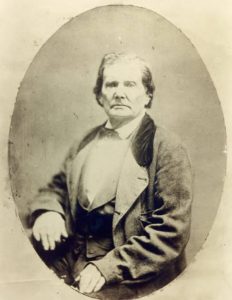 Abraham Lincoln’s father, Thomas Lincoln, died on January 17, 1851, at the ripe old age of 73. Abraham opted not to travel to see his father in his waning days, in part because they were no longer close, but also because Lincoln’s third son, Willie, had been born about a month before and his wife, Mary, was exhibiting significant post=partum sickness. I visited the Lincoln homestead and gravesite near Lerna, Illinois, a few years ago in order to learn more about Thomas and wrote about it here. While they may have had a difficult relationship, Thomas actually had taught Lincoln about farming science as he grew up.
Abraham Lincoln’s father, Thomas Lincoln, died on January 17, 1851, at the ripe old age of 73. Abraham opted not to travel to see his father in his waning days, in part because they were no longer close, but also because Lincoln’s third son, Willie, had been born about a month before and his wife, Mary, was exhibiting significant post=partum sickness. I visited the Lincoln homestead and gravesite near Lerna, Illinois, a few years ago in order to learn more about Thomas and wrote about it here. While they may have had a difficult relationship, Thomas actually had taught Lincoln about farming science as he grew up.
It all started in Kentucky, where Lincoln was born and lived until he was seven. Their final year in the bluegrass state was beset with a climatic phenomenon referred to as “the year without a summer.” I discuss it in more detail in my book, Lincoln: The Fire of Genius, but it has to do with summer freezes and a volcano eruption half a world away. Taking the hint, the family moved to Indiana, where Lincoln later recalled that the family “settled in an unbroken forest” and that “the clearing away of surplus wood was the great task at hand.” Thomas took Abe into the forest and schooled him to recognize the types of trees. The exact species varied by local geography and climate, but one visitor described southern Indiana as “covered with heavy timber—comprising oaks, beeches, ash, three kinds of nut trees.” He also noted the presence of “gum trees, hackberry, sycamore, persimmons, wild cherries, apples and plums, also wild grape vines of enormous diameter and heights,” plus “a large number of maple and sugar trees . . . and a kind of poplar.” Other observers mentioned the presence of hickory, black walnut, locust, dogwood, cherry, sassafras, and elm. A variety of oak trees were present, including white, black, and Jack oak. The undergrowth was densely packed with spice wood, various briers, grape vines, sumac bushes, and dry brush, a diversity that is largely lost today.
Abe quickly learned the relevant ecology. Hickory, walnut, and white oak have taproot systems where large roots descend straight down deep into the earth. Red oak, locust, sycamore, and many pines have heart root systems characterized by many primary roots that may be visible on the surface and spread out below, with numerous secondary roots extending downward in search of water. Maples, hackberry, poplar, ash, gum, and dogwood have a flat root, one that spreads out in a shallow fan around the tree. Each of these required a different strategy for removal, with big hardwoods like oak or ash particularly difficult to remove. Abe became so knowledgeable that during his presidency he settled a dispute between visitors at the Soldiers’ Home. “I know all about trees in right of being a backwoodsman,” he said. “I’ll show you the difference between spruce, pine, and cedar, and this shred of green, which is neither one nor the other, but a kind of illegitimate cypress.” He had learned his lessons well.
Thomas also taught Lincoln the basics of agronomy (crop science), hydrology (the science of water movement), forest ecology (the variety and uses of trees), and even some civil engineering (building a log cabin that wouldn’t leak or flood). Then there was dealing with ever-present disease and weather. While their move from Kentucky to Indiana was in part encouraged by “the year without a summer,” their first year in Illinois was “the winter of deep snow,” which killed much of their livestock and nearly froze Lincoln himself to death.
Overall, Lincoln began his education in the sciences by learning from his father Thomas, who had learned it from his family history of farming. Lincoln learned well, even though he was eager to explore intellectual growth to escape the farming life. Later, Lincoln would read many scientific and mathematical books on his own, gaining an understanding of basic science and an appreciation for the role of technological advancement in helping all men – even frontier farmers – better their condition and gain an equal chance in the race of life.
[Adapted from Lincoln: The Fire of Genius and elsewhere]

Lincoln: The Fire of Genius: How Abraham Lincoln’s Commitment to Science and Technology Helped Modernize America is available at booksellers nationwide.
Limited signed copies are available via this website. The book also listed on Goodreads, the database where I keep track of my reading. Click on the “Want to Read” button to put it on your reading list. Please leave a review on Goodreads and Amazon if you like the book.
You also follow my author page on Facebook.
David J. Kent is President of the Lincoln Group of DC and the author of Lincoln: The Fire of Genius: How Abraham Lincoln’s Commitment to Science and Technology Helped Modernize America and Lincoln: The Man Who Saved America.
His previous books include Tesla: The Wizard of Electricity and Edison: The Inventor of the Modern World and two specialty e-books: Nikola Tesla: Renewable Energy Ahead of Its Time and Abraham Lincoln and Nikola Tesla: Connected by Fate.



 The year in a writer’s life was spectacular. My new book was released, I did tons of media, and wrote constantly, while also juggling my duties as president of the Lincoln Group of DC. Sometimes those two lives blended to the point where the line between them wasn’t so easy to determine. Adding in my
The year in a writer’s life was spectacular. My new book was released, I did tons of media, and wrote constantly, while also juggling my duties as president of the Lincoln Group of DC. Sometimes those two lives blended to the point where the line between them wasn’t so easy to determine. Adding in my 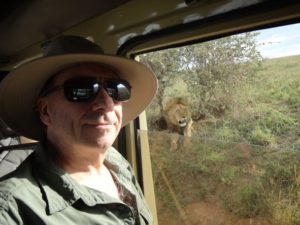 Some followers will recall that my annual travel roundup has been called “
Some followers will recall that my annual travel roundup has been called “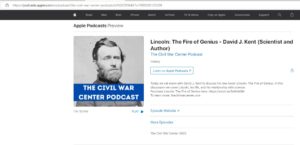 My interview on
My interview on 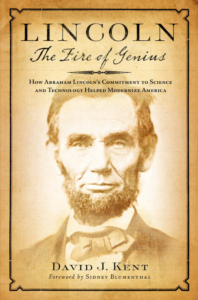
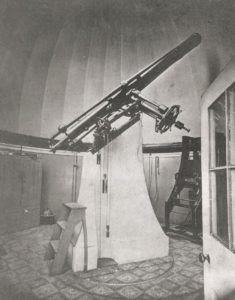 Abraham Lincoln was fascinated by science. One particular fascination was astronomy. Lincoln had attained some knowledge of basic astronomy in Indiana. By his seventeenth year, he had reached his adult six-foot-four-inch height, his 160 pounds glued to a taut muscular frame. Awkward in movement and dress, the uniqueness of his mind managed to impress at least some of the girls. One fifteen-year-old, Anna “Kate” Roby, found him more scientifically instructive than romantic as they sat on the banks of the Ohio River. After Roby noted in awe that the moon was going down, Lincoln lapsed into a rather clinical discourse on the nature of planetary movement: “That’s not so,” he said, “it don’t really go down; It seems so.” He went on to explain: “The Earth turns from west to East and the revolution of the Earth carries us under, as it were: we do the sinking as you call it. The moon as to us is comparatively still. The moons sinking is only an appearance.” Notwithstanding the rudimentary nature of this description, Roby concluded that “Abe knew the general laws of astronomy and the movements of the heavenly bodies,” which she attributed to him being better read than anyone else in the region—“a learned boy among us unlearned folks.” What he read to gain this knowledge is unknown, but Roby admitted that “No man could talk to me that night as he did unless he had known something of geography as well as astronomy.” At least one early researcher suggested Lincoln had access in Indiana to John O’Neill’s New and Easy System of Geography and Popular Astronomy. The book provides a basic introduction to geographical terms and how to read maps, plus an extensive history of each continent. This is followed by an extensive discussion of popular astronomy, the basics of the earth and moon’s movement, the causes of solar and lunar eclipses, and explanations of comets, meteors, and constellations. There are even chapters on the moon’s effect on tides, calculations of longitude, and weather prediction.
Abraham Lincoln was fascinated by science. One particular fascination was astronomy. Lincoln had attained some knowledge of basic astronomy in Indiana. By his seventeenth year, he had reached his adult six-foot-four-inch height, his 160 pounds glued to a taut muscular frame. Awkward in movement and dress, the uniqueness of his mind managed to impress at least some of the girls. One fifteen-year-old, Anna “Kate” Roby, found him more scientifically instructive than romantic as they sat on the banks of the Ohio River. After Roby noted in awe that the moon was going down, Lincoln lapsed into a rather clinical discourse on the nature of planetary movement: “That’s not so,” he said, “it don’t really go down; It seems so.” He went on to explain: “The Earth turns from west to East and the revolution of the Earth carries us under, as it were: we do the sinking as you call it. The moon as to us is comparatively still. The moons sinking is only an appearance.” Notwithstanding the rudimentary nature of this description, Roby concluded that “Abe knew the general laws of astronomy and the movements of the heavenly bodies,” which she attributed to him being better read than anyone else in the region—“a learned boy among us unlearned folks.” What he read to gain this knowledge is unknown, but Roby admitted that “No man could talk to me that night as he did unless he had known something of geography as well as astronomy.” At least one early researcher suggested Lincoln had access in Indiana to John O’Neill’s New and Easy System of Geography and Popular Astronomy. The book provides a basic introduction to geographical terms and how to read maps, plus an extensive history of each continent. This is followed by an extensive discussion of popular astronomy, the basics of the earth and moon’s movement, the causes of solar and lunar eclipses, and explanations of comets, meteors, and constellations. There are even chapters on the moon’s effect on tides, calculations of longitude, and weather prediction.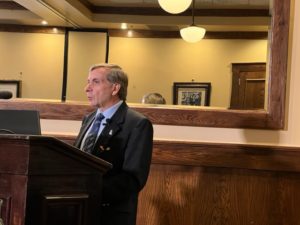 In
In 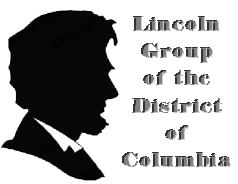 I was interviewed in the summer 2022 issue of The Lincolnian, the newsletter of the Lincoln Group of DC. The Lincolnian is sent to all Lincoln Group members quarterly (
I was interviewed in the summer 2022 issue of The Lincolnian, the newsletter of the Lincoln Group of DC. The Lincolnian is sent to all Lincoln Group members quarterly (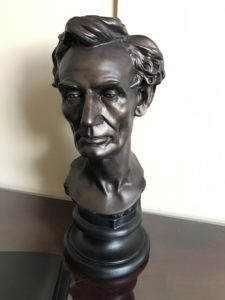 Abraham Lincoln understood the value of science to ordinary Americans.
Abraham Lincoln understood the value of science to ordinary Americans.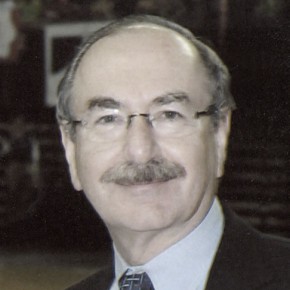 One chapter of my new book, Lincoln: The Fire of Genius, is called Institutionalizing Science. Much of the focus is on the Smithsonian Institution’s first Secretary, Joseph Henry, and his relationship with Abraham Lincoln. I am very happy that Marc Rothenberg, the former Editor of The Papers of Joseph Henry, as well as past Historian at the National Academy of Sciences, has provided the following praise for the book:
One chapter of my new book, Lincoln: The Fire of Genius, is called Institutionalizing Science. Much of the focus is on the Smithsonian Institution’s first Secretary, Joseph Henry, and his relationship with Abraham Lincoln. I am very happy that Marc Rothenberg, the former Editor of The Papers of Joseph Henry, as well as past Historian at the National Academy of Sciences, has provided the following praise for the book:





